Lawson's cypress "Elwoodi": description, planting, care and reproduction
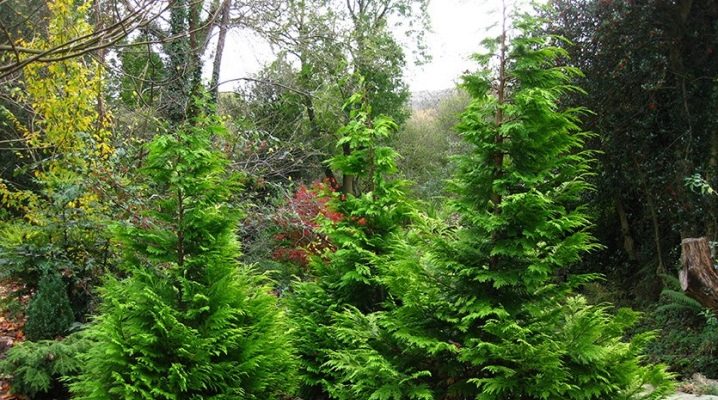
Cypress trees are very popular as indoor plants because they look great. With equal success, the plant decorates the garden and flower beds. This evergreen shrub will adorn any landscape and interior.
Description
The cypress plant is surrounded by a rich religious and mythological history. The shrub was used in ancient Rome for funeral rites. In western and Muslim cemeteries, cypress is the most common tree. Its leaves are often used as a symbol of immortality. Lawson's cypress "Elwoodi" can be kept at home, although most often it can be found in the yard. This winter-hardy plant, which was brought from North America, is also considered to be its homeland in East Asia.
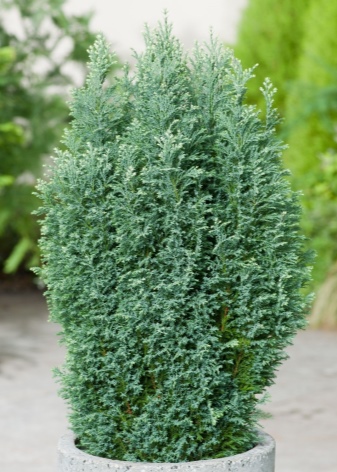
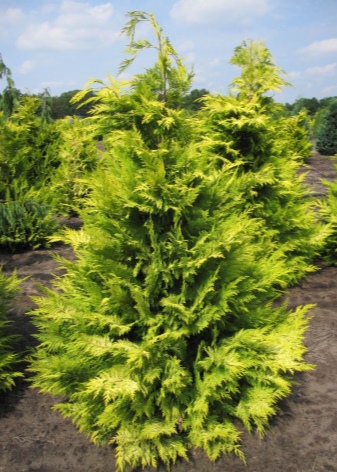
The maximum height of the bush is 3.5 meters. A shrub of this size can only reach 10 years after planting in open ground. If we talk specifically about an indoor flower, then its height, as a rule, is 35 centimeters. For a year, cypress grows by only 5 and in rare cases by 10 centimeters. This plant stands out with a cone-shaped crown, the average diameter of which is about a meter. The plant is sold in nurseries and shops in small pots.
Over time, he needs a transplant with an increase in container capacity.
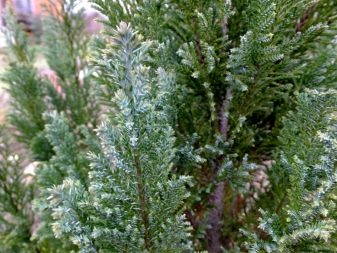
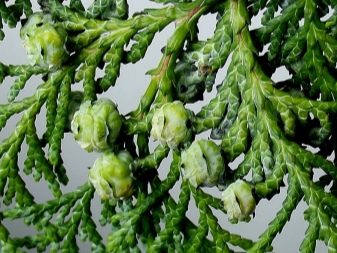
The excellent winter hardiness of this plant made it in demand in most regions of our country. Cypress feels great both in the cold and at a fairly high air temperature.
Landing features
Cypress can be safely planted in open ground, it quickly adapts to new conditions. The fast growing tree outgrows its container shortly after purchase. It is best if the transplant is made after the purchase after a few days. The faster the plant gets used to the new soil and environment, the faster it will begin to grow in breadth and height. Some designers use cypress trees as hedges. True, it takes a lot of time to care for such a structure, since you have to constantly trim it.
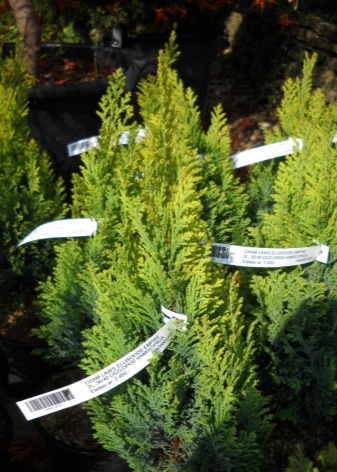

Typical life expectancy for this plant is 20-25 years. It is advisable to choose a place for him where there will be enough light and shadow. The soil must always remain moist. Cypress trees do not like drafts, like most ornamental plants. They also do not tolerate most diseases and insect infestations, and react poorly to a damaged ecology.
Planting cypress trees too close together or too close to other trees and structures that completely shade them can lead to stunted growth and pests.

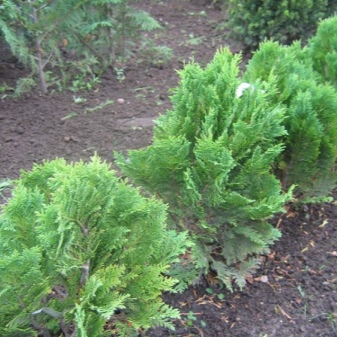
The cypress should be planted in winter, from November to March, when the plant is dormant. but planting and transplanting should be avoided if it is cold outside. The roots are sensitive to cold weather and frost damage can easily damage them. These plants show vigorous growth in early spring. Planting young cypress trees in winter allows them to better acclimate, get used to the new environment.
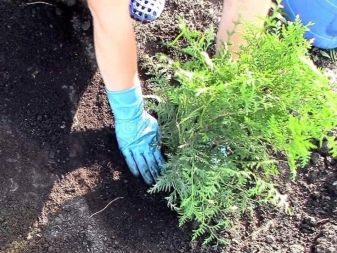
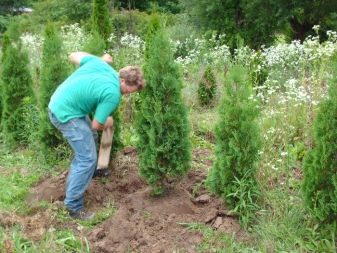
These shrubs thrive in a variety of environmental conditions. They withstand stagnant water and even low nutrient levels.Experts say that no additional site preparation is required when planting cypress trees. In order to provide the planted plants with nutrients, it is recommended to add a little compost and peat or sphagnum moss to the soil.
Mulching around the base of the cypress will help protect young roots from temperature extremes.
When landing in a container, the size of the container to be picked up is of particular importance. The dimensions of the container depend on the size of the plant. Experienced growers advise using a container that is 2 centimeters larger in diameter than the original pot. As the plant grows in size, it is transplanted into a larger container. The procedure should be carried out until the tree reaches the desired size.

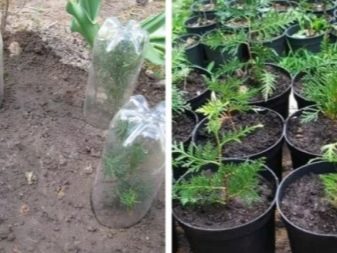
Root pruning every 2 to 3 years helps to maintain further growth, which is important for container growing. For planting in pots, use high quality drained soil and a container with drainage holes. Cypress trees do not tolerate excess moisture at the roots, starting to rot.
If you are planting a new plant or replanting it in a different pot, fall or winter is the best time to do it. While the cypress is dormant in winter, changing capacity is less stressful than during the vigorous growth that occurs in spring and summer. Special attention should be paid to the process of transplanting in the open field. The best time for this, according to most breeders, is not winter, but late autumn.
Before carrying out the procedure, you will need to water the plant well (about 4 days).
- Choose a new site with enough sun and shade for several hours. It is desirable that the soil is light, not marshy. Since in its natural environment this plant prefers to grow on slopes, if possible, you should choose an inclined side for planting.
- Be sure to determine the width of the root ball by measuring from the beginning to the tip of the branch. Dig a hole twice as wide as the data obtained and about 40 centimeters deep.
- Dig a cypress tree in the morning on a cloudy day when there is no wind. The digging is done in a circle, a few centimeters from the widest lower branches. A shovel is used to cut the roots of the tree. After 40 centimeters, you need to tilt the tool slightly to trim the root ball.
- In a new pit, the cypress is placed vertically in the center. Add some soil around the root ball and tamp lightly. This is done until the pit is completely filled. Repeat this process to completely fill the hole.
- Then you need to water the planted plant. Spread a few centimeters of mulch on top to slow the loss of moisture around the tree.
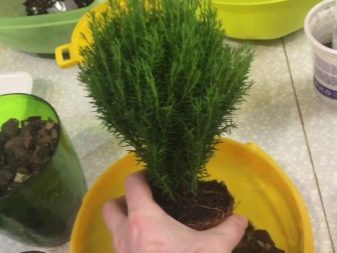
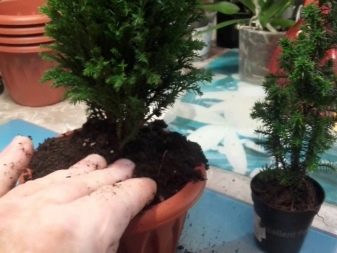
Care rules
Cypress trees do not require much maintenance after planting and transplanting. The first thing to do is to keep the soil moist, but not let it get swampy. The grower will be required to establish a regular watering regime. The main rule that he should be guided by is that more moisture is introduced in summer, less in winter. Different types of cypress trees require different amounts of water.
The plant prefers well-drained soil and watering about twice a month in dry weather if the plant is growing outdoors. The volume of water in a room depends on the size of the container and the ambient temperature.
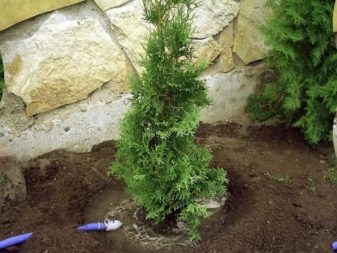
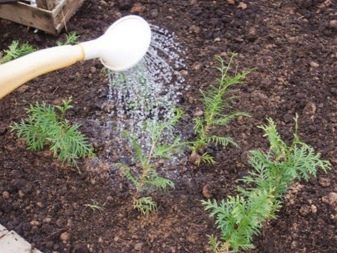
It should always be remembered that the soil in pots dries out much faster than if the cypress grew in the open field. These shrubs are drought tolerant, but excess moisture always leads to fungal and bacterial infections.
It is imperative to check the soil before the next water application. If it has dried up by two centimeters, only then can watering be done. It will be necessary to moisten not only the soil, but also the air. Automatic installations are suitable for this, but you can simply put a container with water and small pebbles near the plant.
If the grower uses a spray bottle, then you should not spray water on the cypress foliage, it is better to do it nearby.
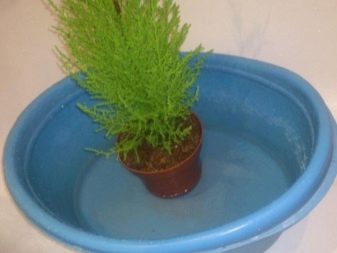
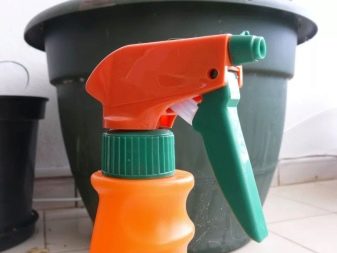
In order to provide the plant with the necessary nutrients at home, it is recommended to add compost in a small amount to the soil used, and regularly apply liquid fertilizers.
Precisely because potted plants are in containers with drainage holes, nutrients and vitamins are quickly washed out of them. It is advised to add trace elements together with watering once a week, while the dose should be 4 times less than indicated by the manufacturer on the package. In winter, top dressing is not applied, during this period the plant must rest. You should not fertilize the soil after transplanting, as this greatly complicates the process of plant recovery.
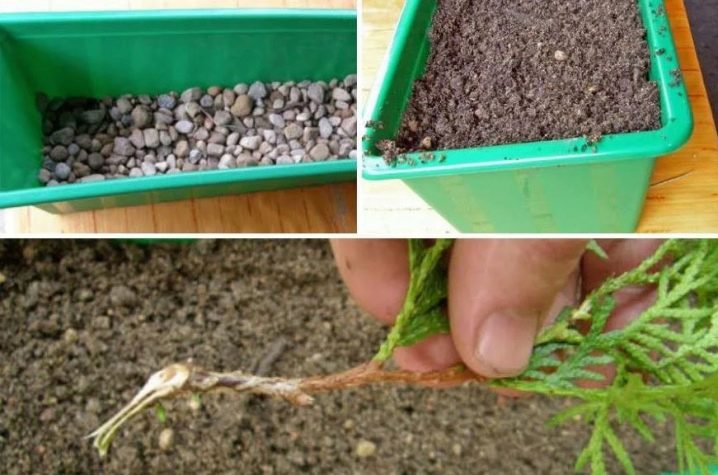
Cypress trees can grow in pots as long as the container is placed in a sunny location with good air circulation. Potted plants also love surface mulch. Cypress trees are fertilized in early spring and in July. Use any fertilizer that contains a high percentage of nitrogen. The ideal formula is 19-6-9, where the first number is nitrogen, then phosphorus and potassium.
When using dry mixtures, before applying top dressing, you first need to moisten the soil. If this is not done, then the roots can simply be burned.
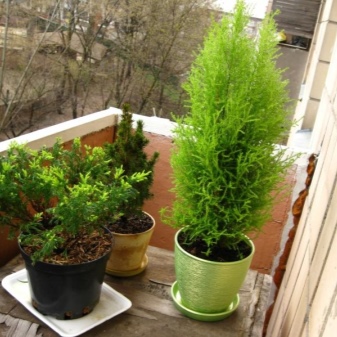
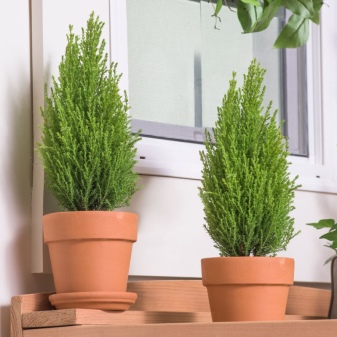
Once the plant reaches the desired size, it does not need to be repotted. Now the grooming procedure will be reduced to regular pruning of the root system every 2-3 years. Root trimming involves removing part of the root ball, and each time the cypress must be removed from the container. The easiest way to do this is to stand near a tree and, using a sharp knife, cut off the roots around it by up to 5 centimeters. After that, it is advisable to treat the shoots with a solution of activated carbon to prevent infection with a fungal infection.
Any toolkit used is a must disinfect.

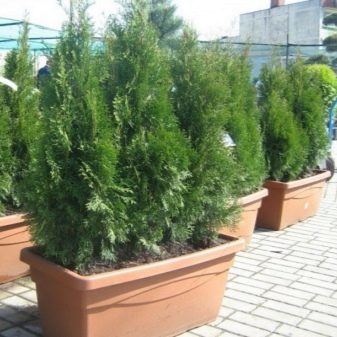
Cypress trees tend to thrive in areas that receive a lot of sunlight. Without enough light, the internal branches of this plant often die off, as a result, the flower turns out to be ugly, that is why it is so important to take proper care of it. Novice growers should remember that these trees will not create new buds on old wood, so any bare areas created by the lack of light cannot be corrected even by pruning.
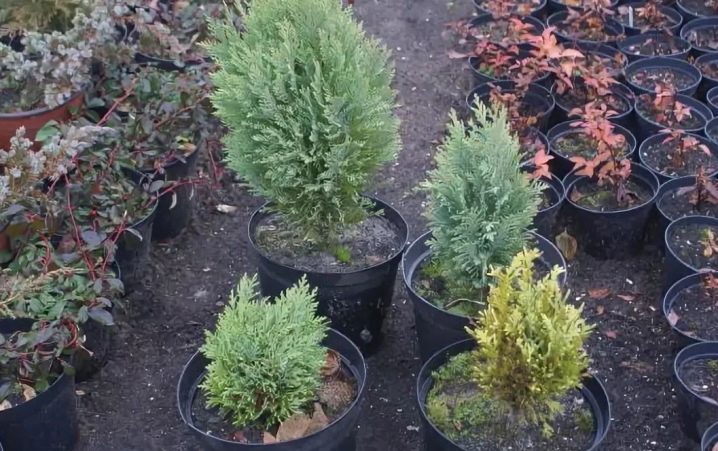
With the exception of bonsai trees, removing old branches is not a prerequisite for keeping the cypress healthy. This procedure is carried out at will, when you want to give the bush a special decorative shape.
The best time to prune is in the fall. Dead shoots are removed and branches that are out of shape are cut on the bushes that grow in the country and in the pot at home. It is important to know when to stop and do only light pruning, trying not to affect old shoots. Branches that go too far will not generate new growth and will create empty space. It will never be possible to grow a beautiful bonsai from a gnarled bush.
If pruning is done to remove unsightly brown dead foliage, it might be better to consider removing it with a high pressure hose instead. This is often enough to remove the dead wood. When forming bonsai, it is used continuous manual shoot removal.
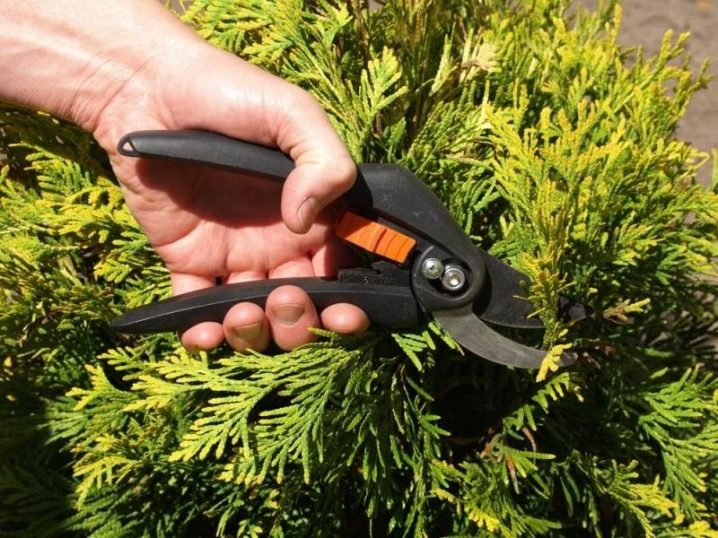
Reproduction methods
The evergreen cypress is a fast growing species that can multiply through cuttings and cuttings. Planting material germinates quickly when properly placed in a nutrient medium. It is best to take cuttings from new growth on the tree, which are just beginning to harden and become covered with bark.The period for collecting such material, as a rule, begins in mid-summer and lasts until early autumn. The process is as follows.
- For planting, a soil with an equal amount of sand, peat moss and perlite in the composition is suitable. Before planting, the soil is watered and only after that the container is filled with it.
- On the cuttings, the leaves are cut off from the lower half.
- Dip the end of each branch into a growth stimulator for 10 minutes.
- Insert the lower end of the branches into the ground, but before that, make a hole in it with a simple pencil or stick.
- Water the ground again with warm water to increase the moisture around the stems. Cover the container with a plastic bag and put it in a room with an air temperature of 21-23 degrees to a place where the light falls.
- A plastic bag is opened every day to provide fresh air to the seedlings. Airing helps to remove excess moisture, so that rot does not appear on the cuttings.
- After 6 weeks, the root system should already appear. You can check this by slightly pulling the handle. If resistance is felt, then everything went well.
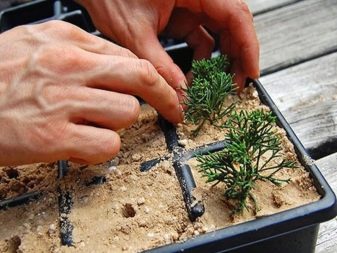
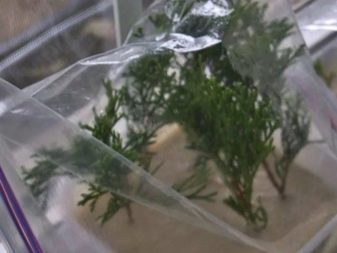


The cypress is transplanted into a larger pot when the roots reach at least 7 centimeters in length. It should take approximately a year for the plant to be ready for this procedure.
Cypress trees growing in the open field can be propagated by branches. For this, the lower branches are bent and sprinkled with earth. The break point can be sprayed with a growth stimulant so that the roots grow into the ground faster. After a year, the branch can be cut off from the mother plant and transplanted. With this method of reproduction, it is not required to create greenhouse conditions, the root system develops well without that, since the outlet is fed from the main trunk.
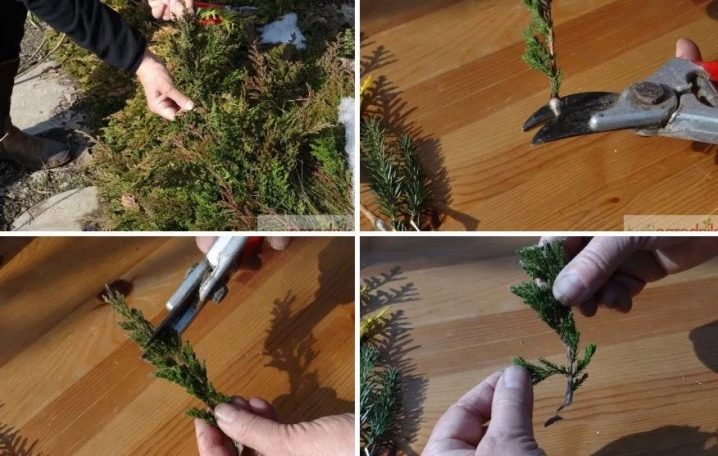
Diseases and pests
Some breeders do not understand why Lawson's cypress tree withered when given proper care. The fact is that in most cases, too much shadow leads to most problems. It is very easy to eliminate the cause - you need to put a pot or transplant the plant in a lighter place where its branches will blow well.
Poor drainage is also an important factor in the development of serious cypress diseases.
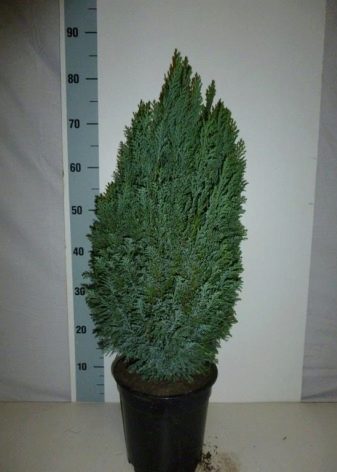
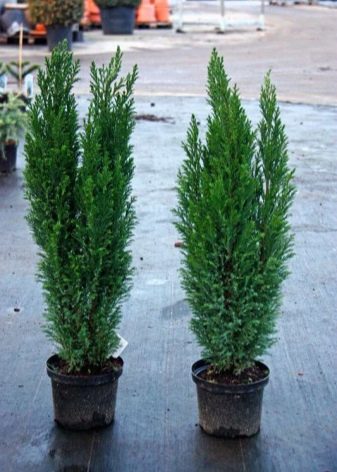
It is worth regularly examining the plant for the presence of phytophthora of the root and crown caused by a fungal pathogen. The main symptoms are - withered and discolored leaves... One of the measures to combat this problem is removal and destruction of damaged shoots.
As a preventive measure, it is worth watering the soil under the bush, and not using top watering, which promotes the spread of fungi. It is imperative to sterilize the tools used with alcohol before and after use on the cypress and between each cut to avoid spreading the disease.
Dead branches are removed first to increase air circulation inside the crown.
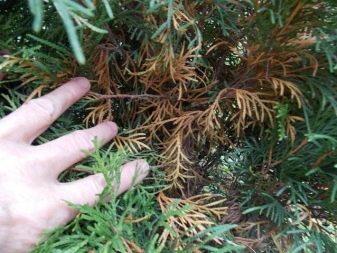
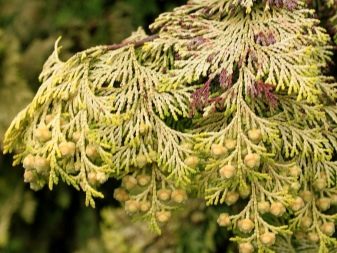
At home, gardeners need to pay attention to the appearance of the plant. Although cypress trees are resistant to a large number of pests, they suffer from attacks from juniper scales. Females have white, round bodies that are very tiny. The insect feeds on sap from stem and needle tissues. The first symptom of infestation is isolated areas of brown foliage with little pest spread. Severe pest infestation can lead to death. In order to control this process, you can use low toxic neem oil or insecticidal soap.
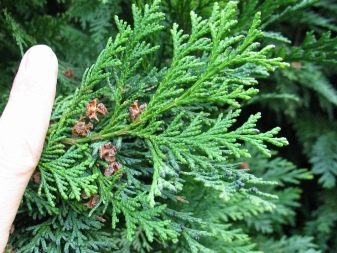
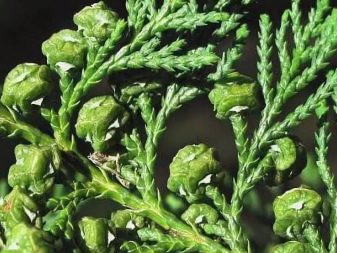
Cypress trees, resistant to most diseases, fall prey to fungal diseases. Phytophotomy spreads sporadically and actively develops with excess moisture and coolness.
In this condition, the tips of the needles often turn brown and ulcers form on the branches. This disease can kill the plant, especially weak or young cypress trees. This late blight appears towards the end of winter. To control the disease the gardener should avoid over-watering, which causes stagnant water, which in turn promotes fungal growth.
Removing and killing infected plant parts reduces the severity of the disease. Fungicides are used as chemicals.
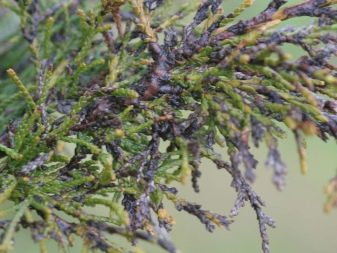
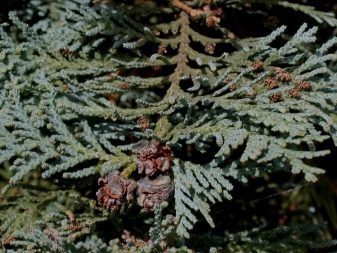
Yellow needles on cypress trees can be the result of low indoor humidity or chlorosis. In the first case, it will be necessary to improve the conditions of detention - they increase the number of watering, more often they humidify the air in the room. Chlorosis is usually the cause of iron deficiency.
To alleviate the condition of the cypress, you can not use fertilizers, but instead take coffee grounds or peat moss and spread them near the roots to increase the acidity of the soil.
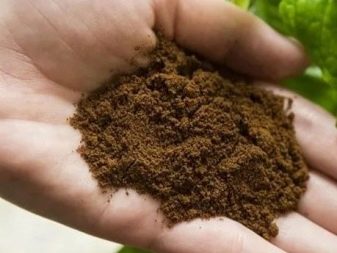
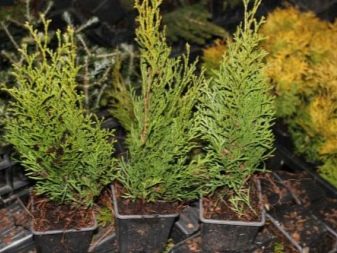
Different types of ticks this plant is also hunted. Tiny red spider mites have sharp pincers that pierce foliage and suck out sap. As a result, the needles of the tree turn pale. Some individuals of ticks can only be seen under a magnifying glass, the pests are so small, therefore, the plant breeder does not always find out about their presence immediately, but only when the tree is already slightly damaged. You can kill insects by simply increasing the humidity.
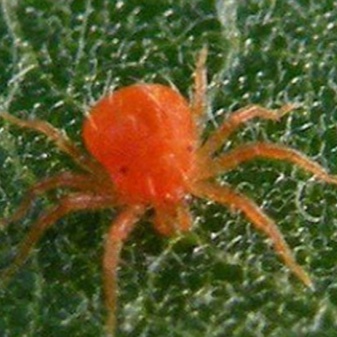
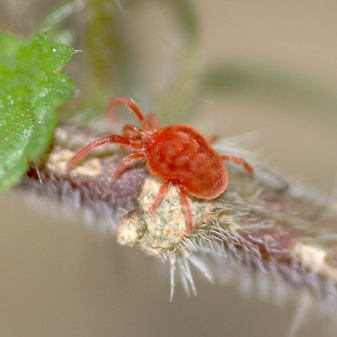
Seiridium cardinal is just as problematic as other fungal infections. It penetrates through cracks in the bark and produces toxins that interfere with the flow of nutrients from the roots to the crown. Sometimes small ulcers appear on the plant, which are located on the bark and can ooze resin. It often causes discoloration of the needles on the infected branch and can even kill the shoot or the entire tree.
To fix the problem, infected branches are removed as soon as possible. Trees with a damaged trunk are not treated, the cypress is disposed of.
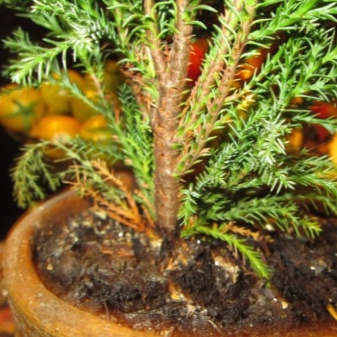
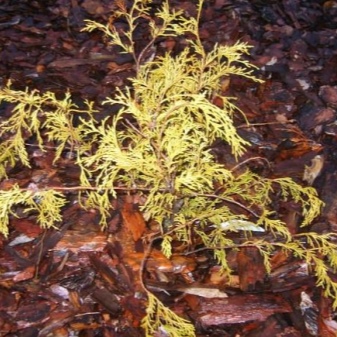
The described plants also suffer from moth larvae. You can find them under the bark, on the foliage where they feed. Sometimes the larvae congregate on the ulcers, but do not cause them.
Spider mites are also a common pest of cypress trees in cool weather. The grower cannot see these tiny creatures, but they do visible damage by sucking the sap from the tree. When the tick inserts the proboscis into the foliage, tiny yellow spots appear, and they often tell about the infection. Outdoors, when the weather gets warm, natural predators, including ladybugs, help control infestation. and at home it is better to wipe the plant with alcohol.
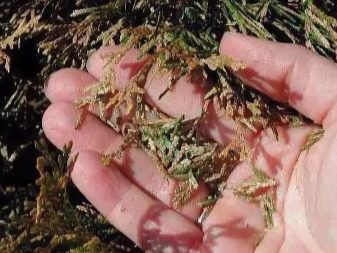

Reviews
There are many positive reviews about the cypress. This plant perfectly survives changes in temperature, while it does not require a lot of maintenance. Experienced growers advise to provide him with the necessary amount of sun, observe the irrigation regime and monitor the humidity in the room, then most of the problems can be avoided. Particular attention should be paid to root rot caused by late blight. It usually affects young plants in pots with poor drainage.
If the cause is eliminated, then the disease will not have to be treated, especially since this is a rather troublesome business.
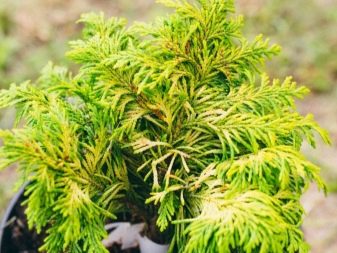
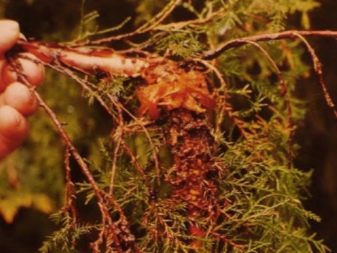
It must be remembered that This pathogen lives in the soil and enters the cypress through wounds or damaged roots, which is why it is important to treat the sections with an activated carbon solution during transplantation. Since the fungus destroys the roots, the entire plant quickly suffers, which does not receive the required amount of oxygen and nutrients. When the cypress is healthy, it pleases with a beautiful crown, brightly colored foliage.
Such a plant will become a wonderful decoration for any winter garden. Its growth can be controlled by pruning the root system and an interesting shape can be created through easy pruning.
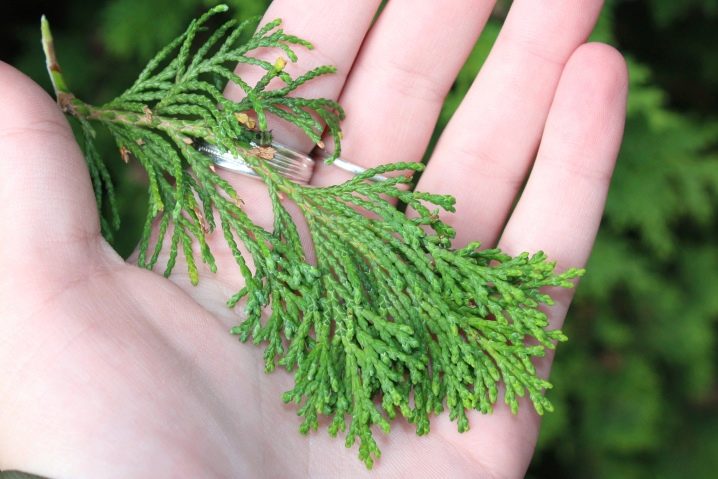
For information on how to properly care for Lawson's cypress at home, see the next video.































































The comment was sent successfully.